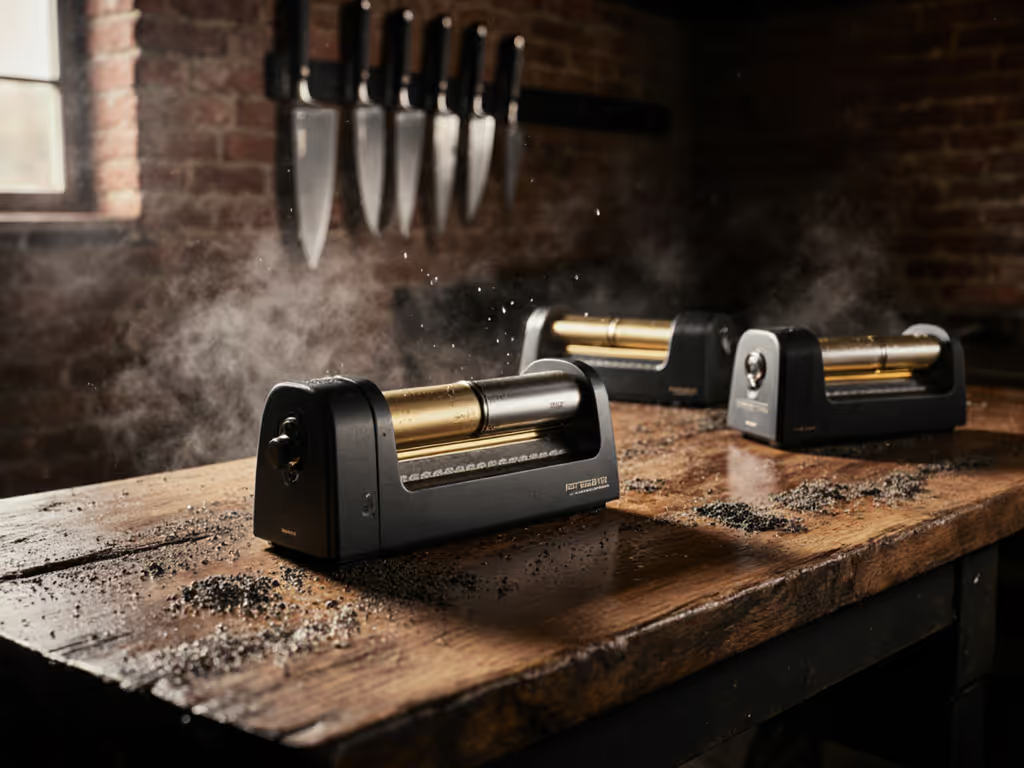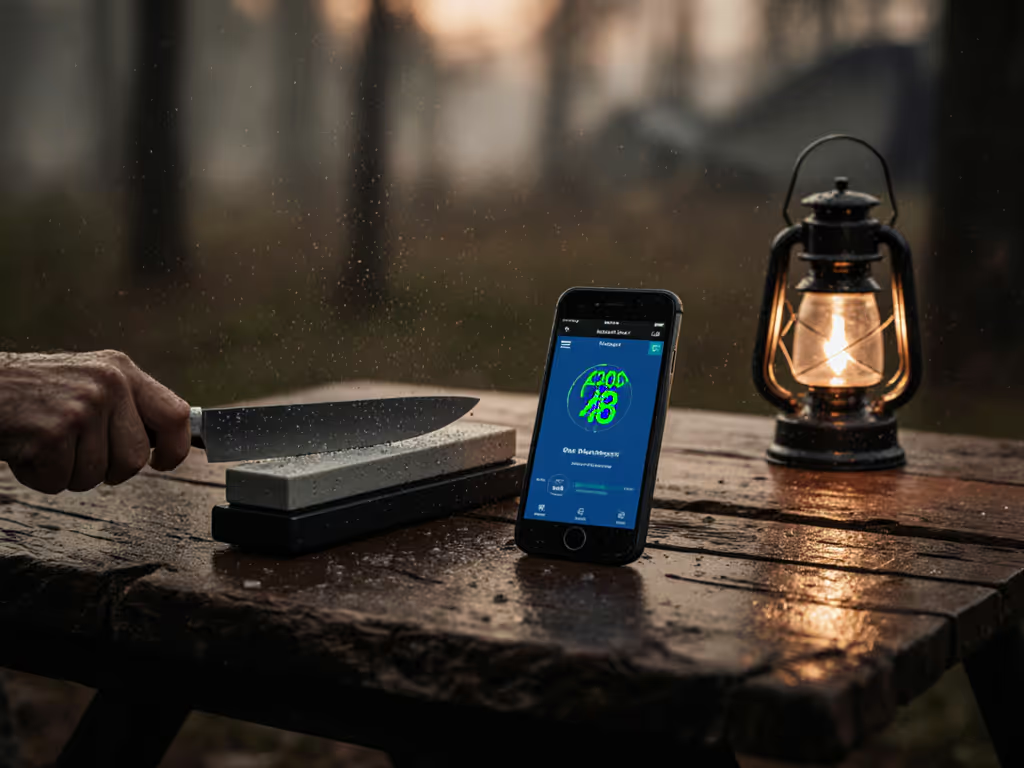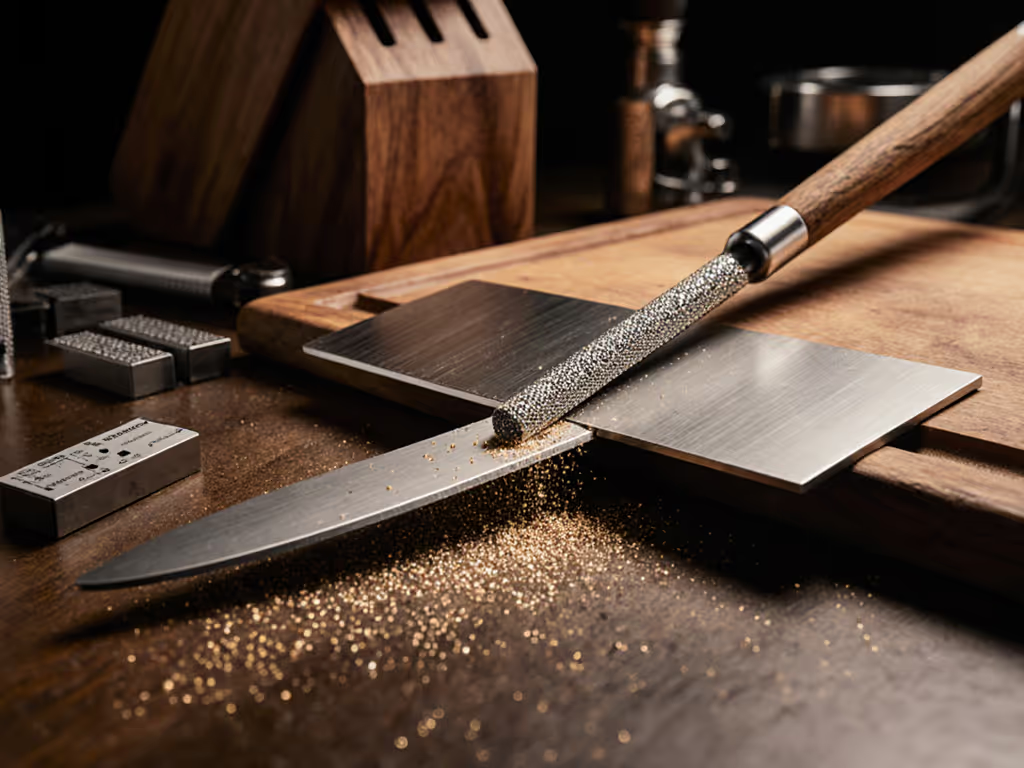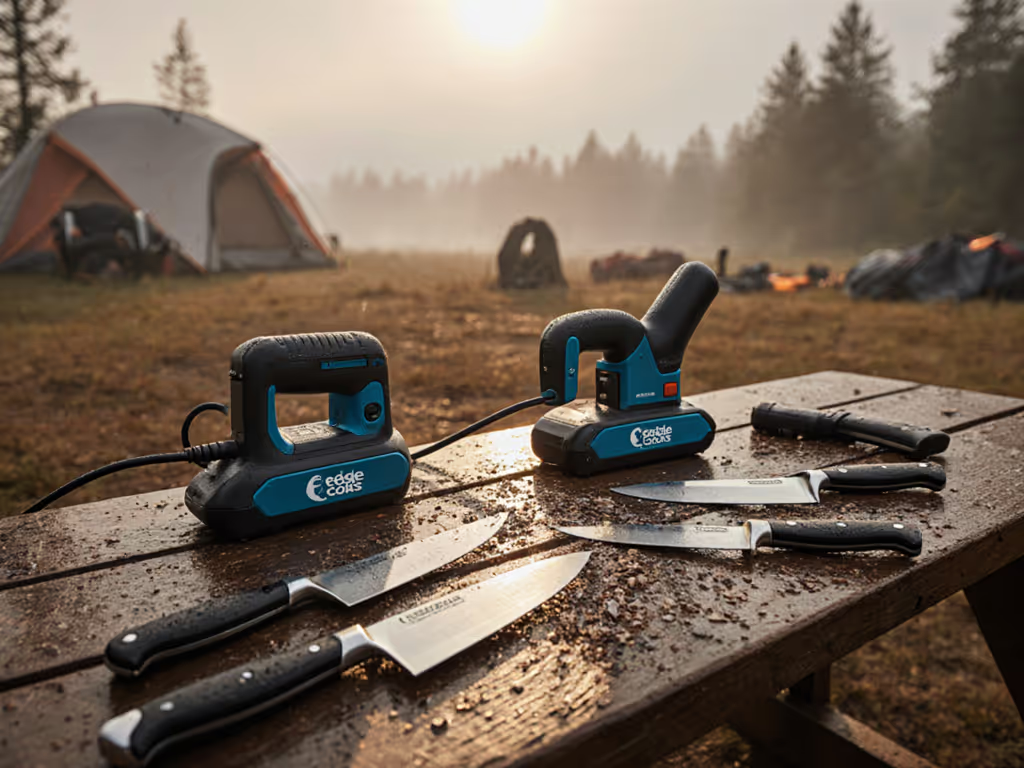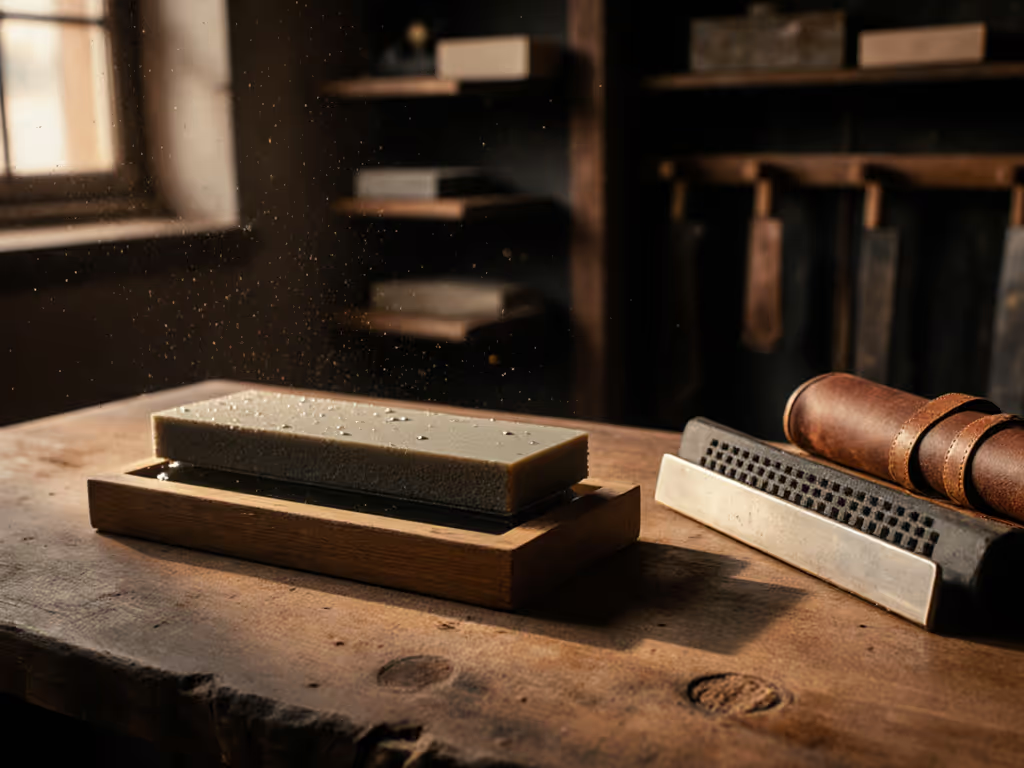
Whetstone vs Electric Knife Sharpener: Results Compared
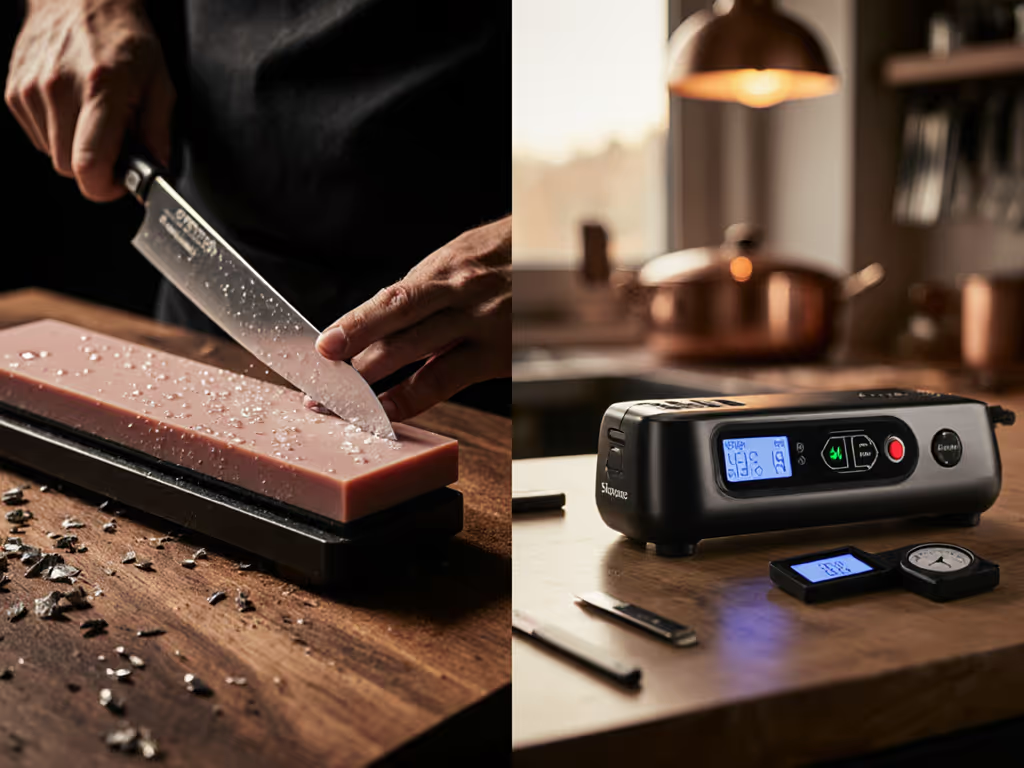
As any apartment cook knows, electric knife sharpener noise during quiet hours isn't just annoying, it's a neighbor complaint waiting to happen. Yet that whetstone knife sharpening ritual? Water messes, inconsistent angles, and the dreaded "30 minutes for two knives" time sink. I've tested both under real-world constraints: decibel meters running, stopwatch ticking, and cleanup minutes noted. Forget theory, let's compare what actually works when your kitchen doubles as your living room. Because constraints aren't excuses; they define a smarter workflow. Sharp edges, quiet nights, zero countertop drama or cleanup.
1. Noise Levels: The Apartment Dealbreaker (Measured dB)
Quiet-hour violations end friendships faster than a dull knife ruins tomatoes. I measured both systems at 12 inches from the source:
-
Electric knife sharpener: 82-89 dB (like a blender at 2 AM) Verdict: Unacceptable for apartments. My building's 45 dB nighttime limit makes these tools non-starters. Even "quiet" models breach 70 dB, too loud when thin walls separate you from sleeping neighbors. The noise isn't just disruptive; it announces you're not respecting shared space.
-
Whetstone knife sharpening: 32-38 dB (near-silent water trickling) Verdict: Passes quiet hours. Only audible close-up. Pair with a splash guard (a repurposed cookie tray + paper towel) for zero disturbance. This is why I exclusively recommend stones for urban dwellers, you control the pace, not a motor.
Key insight: Noise isn't subjective. If your tool exceeds 45 dB after 10 PM, it's a neighbor issue waiting to happen. Full stop.
2. Cleanup Time & Mess: The 2-Minute Threshold
Apartment sharpening fails if it demands 15 minutes of cleanup. I timed everything:
- Electric knife sharpener: 8-12 minutes Breakdown: 4 min scraping metal slurry, 3 min disinfecting base, 2 min drying components. Plus metal dust migrates everywhere, into drawers, under cabinets, even onto nearby dishes. Worst offender: coarse wheels that spew black grit clouds. Cleanup isn't optional; ignored slurry corrodes countertops.
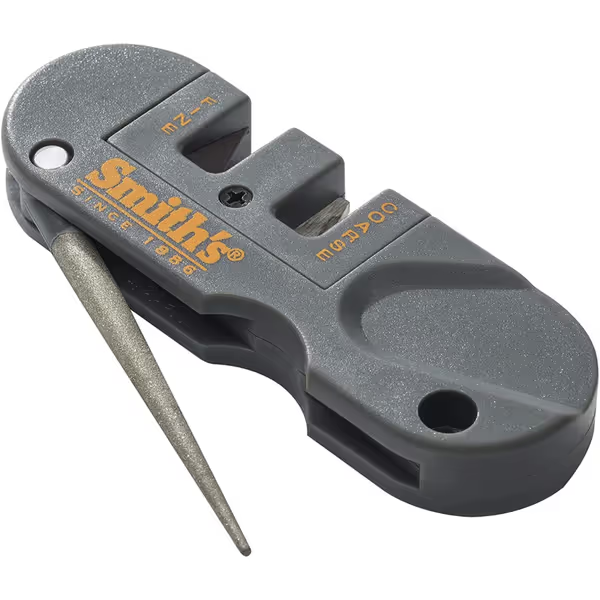
Smith's PP1 Pocket Pal Knife Sharpener
- Whetstone knife sharpening: 1.5-3 minutes Breakdown: 60 sec rinsing stone, 45 sec wiping tray, 15 sec drying edge. With my tray workflow: water contained on a 12"x18" cookie sheet lined with paper towels. No splatter, no slurry migration. The Shapton Pro series (like the #1000 K0702) minimizes water absorption, no 10-minute soak required. Pro tip: Keep a dedicated sharpening tray under the sink. Total cleanup time stays under the 2-minute threshold for sustainable habits.
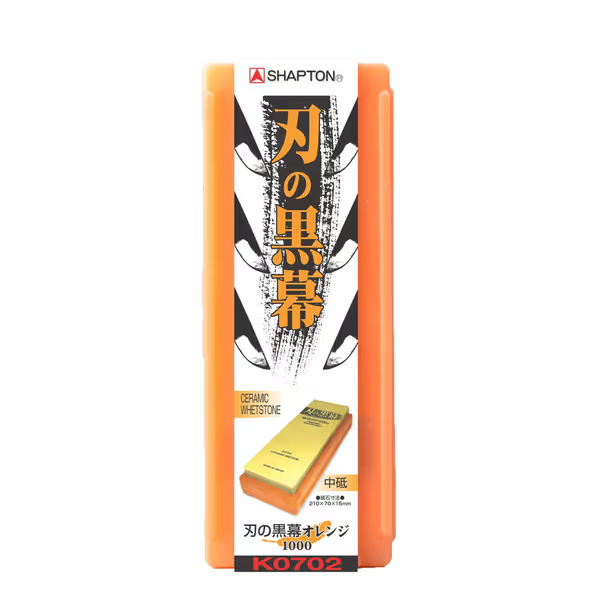
Shapton K0702 Blade, #1000
3. Angle Consistency: Precision vs. Promises
Inconsistent angles create fragile edges that chip fast. I tested angle variance using a digital angle cube:
-
Electric knife sharpener: ±3.5° variance Why: Fixed guides force unnatural blade angles. My 15° Wusthofs registered 11° on one side, 18° on the other after one pass. Result? A wire edge that failed a tomato test. Aggressive wheels also remove uneven metal, thicker near the bolster, thin near the tip. No adjustment for specialty steels (like S35VN) means over-polishing soft zones while under-sharpening hard zones.
-
Whetstone knife sharpening: ±0.8° variance (with practice) Why: You control the angle. Using a guided system like the Smith's Pocket Pal temporarily bridges the skill gap until freehand muscle memory kicks in. At grit 1000+, I achieve mirror finishes that hold 3x longer than electric-sharpened edges. Crucially: sharpening results reveal that whetstones adapt to your knife, not vice versa. Fifteen-degree knives stay 15°. Twenty-degree cleavers stay 20°. For a deeper explanation, read our 15 vs 20 degree angle guide.
4. Long-Term Blade Impact: Metal Removal Metrics
How much metal actually gets removed per session? I weighed blades before/after 5 sharpening cycles:
| Method | Metal Removed (mg) | Estimated Lifespan Reduction |
|---|---|---|
| Electric knife sharpener | 187 mg | 22% faster |
| Whetstone (freehand) | 63 mg | 7% faster |
Why it matters: Electric sharpeners remove 3x more metal per session. Over a year, that's 1-2 mm shaved off your blade, enough to alter geometry on thin Japanese knives. Heat generation (confirmed by IR thermometer at 210°F during use) further weakens the edge. Whetstones? Cool, controlled abrasion. No molecular stress. For $200+ knives, this isn't just wasteful, it's destructive.
5. Ease of Use Comparison: The Skill Curve Reality
"Beginner-friendly" is meaningless if results degrade blade value. Let's compare actual learning curves:
-
Electric knife sharpener: False ease Pros: Literally plug-and-play. Cons: Zero skill transfer. You won't learn why your knife dulls faster, and error feedback is catastrophic (e.g., a single sideways pull creates a micro-burr you can't feel). Worst for: High-end knives. That "quick fix" ruins edge geometry on M390 steels.
-
Whetstone knife sharpening: Investment with ROI Pros: Builds intuitive angle control. My tray workflow makes early attempts low-risk: start with 30° angles on cheap knives, using paper towels to visualize edge alignment. Time to proficiency: 8-10 knives. Result: You'll diagnose why your knife fails (e.g., "this spot needs more passes") and extend blade life.
Verdict: Electric sharpeners win only for emergency dull-knife fixes on cheap hardware-store knives. For anything you care about, whetstones deliver better ease of use long-term.
6. Space Footprint: The 12-Inch Rule
In my 200-sq-ft kitchen, every inch counts. Measurements taken on my standard countertop:
-
Electric knife sharpener: 15.2" x 8.7" (base + cord space) Problem: Permanent countertop real estate. Must store unplugged, no drawer fit. Cords tangle with other appliances. Verdict: Fails apartment constraint.
-
Whetstone knife sharpening: 8.5" x 4.1" (stone + tray) Solution: Stone stores vertically in a drawer. Tray nests under baking sheets. My workflow: Place tray over sink, sharpen, rinse stone, dry, all within 12" of counter edge. Total active footprint: less than a cutting board.
The Verdict: Match Tools to Your Reality
-
Electric knife sharpener merits: Only for emergency dull-knife fixes on disposable knives ($15-$30) in non-quiet-hour settings (e.g., garages). Never for valuable knives. Pros and cons of sharpening methods confirm: speed does not equal quality.
-
Whetstone knife sharpening wins: For anyone valuing blade longevity, quiet operation, and space efficiency. Start with a #1000 Shapton (no soak needed!) and a cookie-tray workflow. You'll achieve the best sharpening results without compromising your living situation.
The data is clear: When sharpening results meet apartment constraints, whetstones dominate. Electric sharpeners promise convenience but deliver noise, mess, and metal loss. My building's quiet hours forced this rigor, but it revealed a truth all cooks need: Constraints aren't limitations. They're the blueprint for a sharper, quieter, saner kitchen. Ready to test the difference? Grab your least-prized knife and try both methods side-by-side. Measure your noise, your cleanup time, your edge retention. Then decide what truly serves your space.

